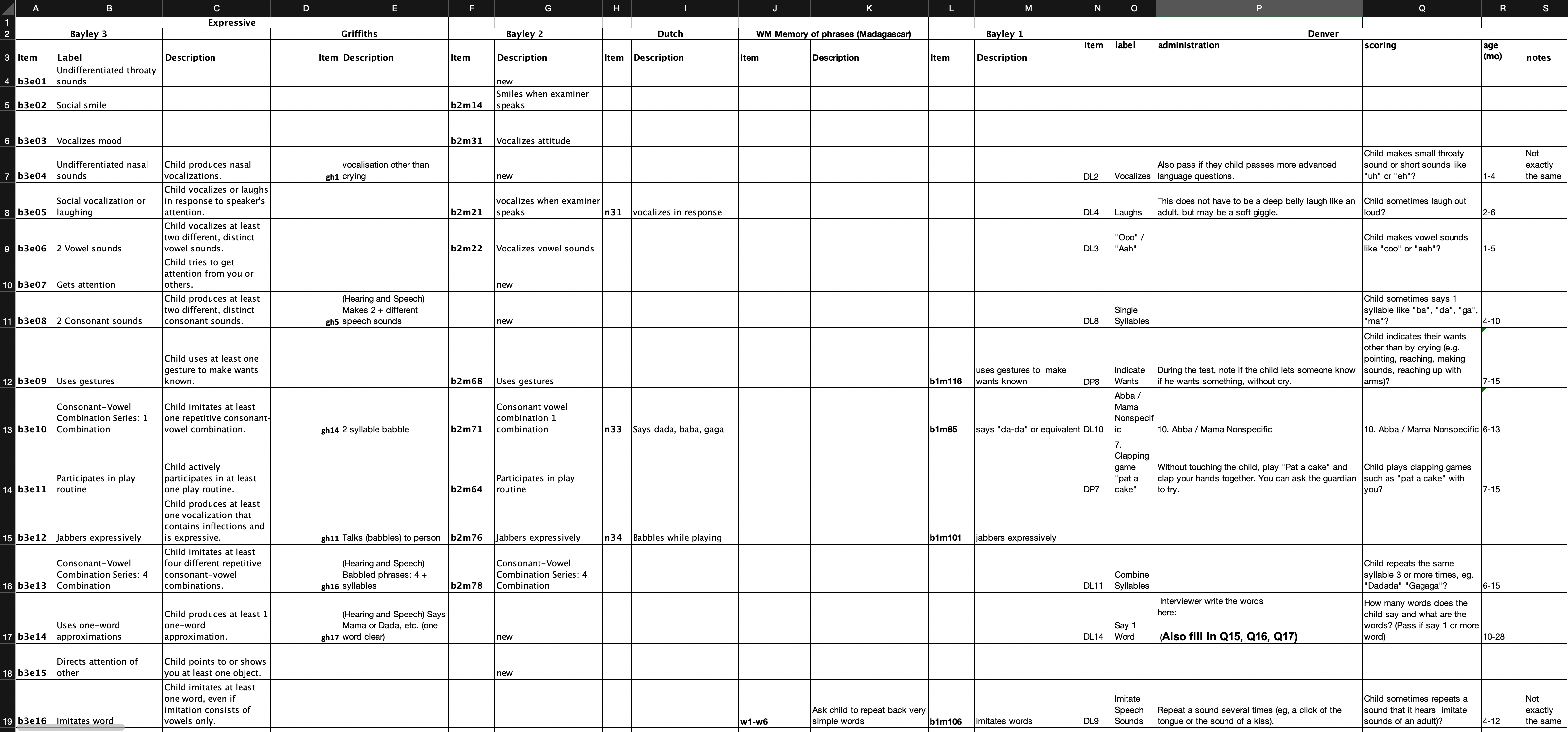5.1 GCDG data: design and description
5.1.1 Data combination
Section 2.1 provides an overview of the data collected by Global Child Development Group. The group collected item level measurements obtained on 12 instruments for measuring child development across 16 cohorts.
We coded every item as 0 (FAIL), 1 (PASS) or missing. For some instrument we did some additional recoding to restrict to these two response categories. The Battelle Developmental Inventory scores items as 0 (FAIL), 1, or 2, depending on the level of skill demonstrated or time taken to complete the task. We joined categories 1 and 2 for these items. The ASQ items were originally scored as 0 (not yet), 5 (sometimes) and 10 (succeeds). We recoded both 5 and 10 to 1.
We concatenated the datasets from the GCDG cohorts cohort. The resulting data matrix has 71403 rows (child-visit combinations) and 1572 columns (items) collected from 36345 unique children. We removed 233 items that had fewer than 10 observations in a category. The remaining 1339 items were candidates for analysis. The total number of observed scores was equal to about 2.8 million pass/fail responses. While this is a large number of measurements, about 97 percent of the entries in the matrix are missing.
5.1.2 Equate group formation
A group of 13 subject-matter experts from the Global Child Development Group cross-walked the available instruments for similar milestones. This group
- developed an item coding schema;
- matched similarly appearing items stemming from different instruments;
- formed an opinion about the quality of each match;
- noted peculiarities of the matches;
- reported the results as a series of detailed Excel spreadsheets.

Figure 5.1: A snapshot of information generated by subject-matter experts.
The group evaluated around 1500 milestones. After several days, this highly-skilled, intensive labour resulted in a series of spreadsheets. Figure 5.1 shows an example. These sheets formed the basis of an initial list of 184 equate groups, each consisting of at least two items.